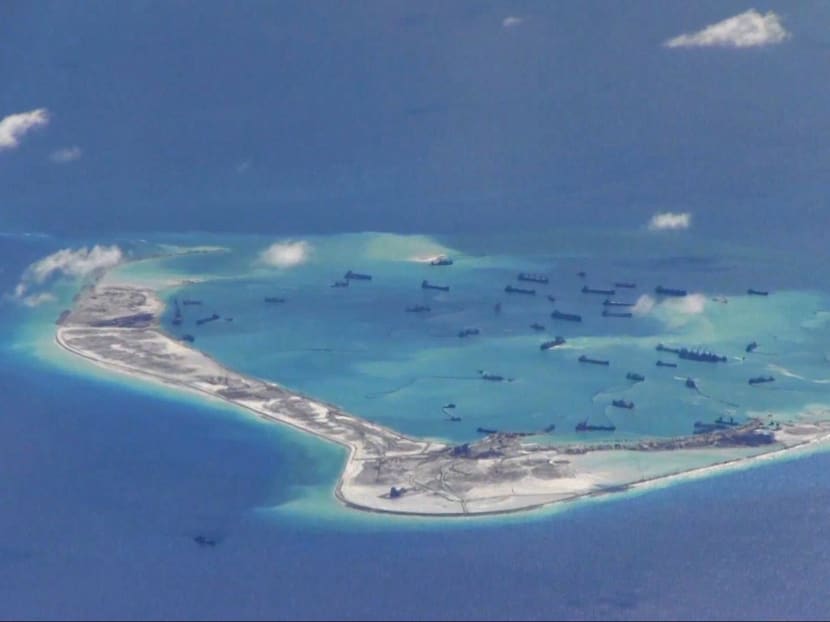South China Sea islands: Facts on a decades-long dispute
BEIJING — A decades-long, multi-pronged dispute over territory in the South China Sea escalated this week with the claim that Beijing has put missile batteries on a contested island in the region.

Chinese dredging vessels are purportedly seen in the waters around Mischief Reef in the disputed Spratly Islands in the South China Sea. Photo: Reuters
BEIJING — A decades-long, multi-pronged dispute over territory in the South China Sea escalated this week with the claim that Beijing has put missile batteries on a contested island in the region.
Commentators say the 3 million sq km of water is a potential flashpoint for regional conflict.
Here are five key questions about the sea and the issues around it.
WHAT’S THERE AND WHO’S DISPUTING IT?
It’s mostly empty, and hundreds of the small islands, islets and rocks are not naturally able to support human settlement. Significant chains include the Paracels in the north, and the Spratlys in the south.
But everyone surrounding the sea — Vietnam, Malaysia, the Philippines, tiny Brunei, Taiwan and, most significantly, China — lay claim to some part of it. Beijing says it has sovereignty over almost the whole area, citing an ill-defined “nine-dash line” originating in 1940s-era maps as proof.
IF THERE’S NOTHING THERE, WHY THE DISPUTE?
Scientists believe that the seabed could contain unexploited oil, gas and minerals, which would be a boon to any country that can establish their claims to the region’s waters, especially in resource-hungry Asia. It’s also home to abundant fisheries that feed growing populations.
But the sea’s key value is strategic. Shipping lanes vital to world trade pass through it, carrying everything from raw materials to finished products, as well as enormous quantities of oil.
Beijing views the South China Sea as its own backyard, a place where it is entitled to free, uninterrupted rein and where its growing navy should be able to operate unhampered.
HOW ARE THESE DISPUTES PLAYING OUT?
For years now, various claimants have been fortifying and building up the tiny reefs and islets to bolster their claims to ownership.
China’s land-reclamation programme has been particularly aggressive. Satellite pictures now show inhabited islands where there was once only submerged coral.
Many have multiple facilities, including some with runways long enough for huge commercial or military planes.
Beijing insists its intent is peaceful and the features it is constructing are for civilian use, such as maritime rescue, as well as military purposes.
The US and others suspect China is trying to assert its sovereignty claims by changing the facts on the ground, and say that it could pose threats to the free passage of ships through the region’s waters and air space.
WHAT’S HAPPENED THIS WEEK?
Commercial satellite operators have published pictures that reportedly show the presence of missile launchers on Woody Island, part of the Paracels chain over which China has had control for decades.
Taiwan on Wednesday (Feb 17) confirmed it believed Beijing had moved batteries th
When challenged, China did not deny the claims, but insisted anything it had done was “consistent with the right to self-preservation and self-protection”.
Reports on the weapons said they were surface-to-air missiles with a range of about 200km, which would suggest they are not targeted at anything on land.
WHAT WILL HAPPEN NEXT?
The United States and its ally Australia have carried out a number of so-called “Freedom of Navigation” overflights and sail-bys in the region.
They say they are asserting the right of any sovereign nation to use international waters and skies. China calls these operations “provocations” and insists they are violations of its territory.
With the South China Sea home to runways capable of launching fighter jets that could patrol over the sea, and now missiles that could threaten wayward planes, the stakes in the dispute have got higher. AFP






